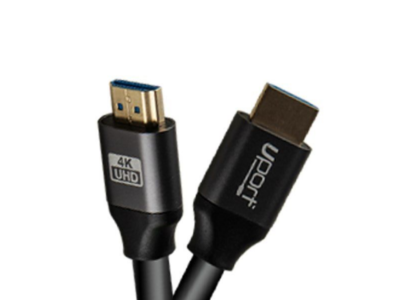Introduction: HDMI (High-Definition Multimedia Interface) cables are ubiquitous in modern home entertainment and computing setups. They transmit high-quality audio and video signals from devices like gaming consoles, Blu-ray players, and computers to displays such as TVs and monitors. But does the quality of the HDMI cable affect your viewing experience? Let’s delve into this often-debated topic to uncover the facts.
What is HDMI Cable Quality? HDMI cables vary in terms of construction, materials used, and their ability to transmit signals effectively over distances. While all HDMI cables adhere to the same basic standards, differences in quality can impact performance under certain conditions.
Understanding HDMI Standards: HDMI cables are classified into different categories based on their capabilities:
- Standard HDMI: Supports up to 720p and 1080i video resolution.
- High-Speed HDMI: Supports higher resolutions up to 4K, including 3D and Deep Color.
- Premium High-Speed HDMI: Certified for 4K/UltraHD performance with increased bandwidth.
- Ultra High-Speed HDMI: Supports up to 48Gbps for 8K and 10K video resolutions.
Factors Affecting HDMI Cable Quality:
- Build Quality: Thicker cables with better shielding can resist interference and signal degradation over longer distances.
- Bandwidth and Resolution: Higher-quality HDMI cables (e.g., High-Speed, Premium High-Speed) are necessary for 4K and higher resolutions, as they can handle increased data bandwidth without signal loss.
- Durability: Premium cables often feature gold-plated connectors and durable insulation, reducing wear and tear over time.
Debunking Common Myths:
- Expensive vs. Cheap Cables: Price does not always correlate with quality. Look for cables that meet necessary standards rather than focusing solely on price.
- Brand Names: Recognizable brands often provide better warranties and customer support but may not always offer superior performance compared to lesser-known brands with adequate certifications.
Impact on Viewing Experience:
- Visual Quality: A poor-quality HDMI cable can result in reduced clarity, color accuracy, and visual artifacts on your display.
- Audio Performance: Higher-quality cables ensure reliable transmission of audio signals, preventing dropouts and interference.
Choosing the Right HDMI Cable:
- Consider Your Needs: Match the HDMI cable specifications (e.g., Standard, High-Speed, Premium High-Speed) with your device and display requirements.
- Length Requirements: Longer cables may require higher-quality specifications to maintain signal integrity.
Conclusion: While HDMI cables conform to specific standards, the quality does matter in ensuring a seamless viewing and audio experience, especially at higher resolutions. Investing in the right HDMI cable can enhance your entertainment setup’s performance and longevity. Whether you’re gaming, watching movies, or using a computer, choosing a quality HDMI cable suited to your needs can make a noticeable difference in your overall enjoyment.
For more insights into home entertainment technology and setup tips, stay connected with our blog or follow us on www.uport.in.






